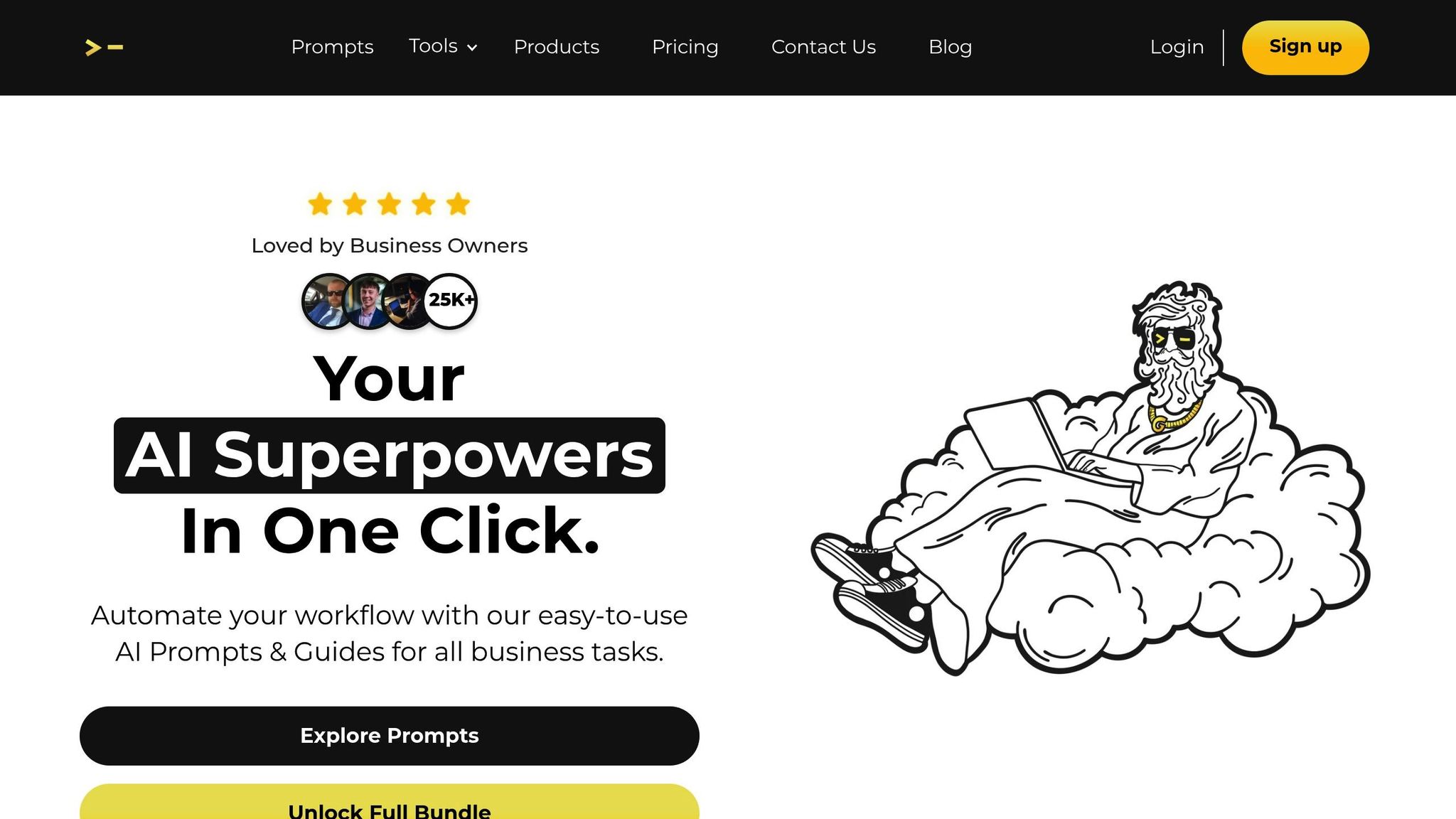
AI agents are transforming how we work and solve problems. They operate autonomously, learn from interactions, and make decisions in real time. Here's what you'll learn in this guide:
AI agents are reshaping industries, and this guide will help you create one step by step.
Grasping the core components of an AI agent is essential when you're building your first automated assistant. These elements serve as the backbone, enabling the creation of a functional and dynamic AI system.
AI agents are built on several key components, each serving a distinct purpose:
| Component | Function | Example Application |
|---|---|---|
| Perception & Input | Processes incoming information | Natural language understanding, data extraction |
| Memory System | Stores and retrieves information | Short-term task context, long-term knowledge base |
| Decision Engine | Evaluates options and makes choices | Risk assessment, response selection |
| Action Module | Executes decided tasks | API calls, database updates |
| Learning System | Improves performance over time | Pattern recognition, behavior optimization |
Each of these parts works together to ensure the agent can interpret, process, and act on tasks effectively. Take IBM's watsonx.ai™ banking assistant, for example. It integrates these components seamlessly to deliver a conversational experience capable of addressing even complex customer queries.
AI agents operate through a structured workflow to complete tasks efficiently:
AI agents are making waves across industries, driving efficiency and delivering measurable results:
| Industry | Application | Impact |
|---|---|---|
| E-commerce | Product Recommendations | Accounts for 35% of the company's revenue |
| Customer Support | Automated Service | Reduces support tickets by 65% |
| Financial Services | Fraud Detection | Cuts fraud by up to 70% at JP Morgan |
| Entertainment | Content Personalization | Boosts user engagement |
"Think of agents as the new apps for an AI-powered world. We're rapidly adding new capabilities to tackle individuals' biggest pain points at work and drive real business results".
These examples highlight how AI agents can be tailored to meet specific business challenges or ai strategy while retaining their essential functionality. Up next, we’ll explore the tools you need to start building your own AI agent.
Creating your first AI agent can be a manageable task if you have the right tools on hand. With the AI agent market growing at an impressive 44.8% annually and expected to hit $47.1 billion by 2030, user-friendly platforms are making the process more accessible than ever.

God of Prompt stands out as a go-to platform for building AI agents, offering a vast library of resources. With over 30,000 prompts and specialized toolkits, it simplifies the development process. Here’s what it brings to the table:
| Feature | Description | Benefit |
|---|---|---|
| Prompt Collections | Bundled prompts for specific use cases | Speeds up agent development |
| How-to Guides | Step-by-step instructions | Lowers the learning curve |
| Custom GPTs Toolkit | Pre-built templates and configurations | Simplifies the setup process |
| Lifetime Updates | Ongoing content and feature additions | Offers long-term utility and support |
While God of Prompt is a robust resource, integrating additional tools can further enhance your AI agent’s functionality.
To maximize your AI agent’s capabilities, consider incorporating complementary tools such as:
| Tool Type | Purpose | Integration Benefits |
|---|---|---|
| Vector Stores | Data storage and retrieval | Powers personalized, context-aware responses |
| API Connectors | Linking external services | Broadens the agent's functionality |
| Analytics Tools | Performance tracking | Helps monitor and improve effectiveness |
For example, Navan utilized vector stores in its AI-powered travel agent to deliver tailored, role-specific support, showcasing how these tools can elevate user experiences.
Choosing the right tools is key to bridging your AI agent’s design with real-world deployment. Here’s how to approach the selection process:
Other factors to keep in mind include:
Creating your first AI agent doesn’t have to be complicated if you approach it the right way. With Gartner forecasting that 33% of enterprise software will incorporate agentic AI by 2028, now is an excellent moment to dive in. Here’s a straightforward three-step process to help you design, configure, and fine-tune your AI agent.
Start by defining clear and measurable goals for your AI agent. Did you know that over 80% of AI projects fail? To avoid being part of that statistic, focus on SMART goals - Specific, Measurable, Achievable, Relevant, and Time-bound.
| Goal Component | Example |
|---|---|
| Business Need | Customer Support |
| Target Outcome | Reduce query resolution time by 30% |
| Success Criteria | Cost savings and improved satisfaction rates |
| Compliance Requirements | Adherence to privacy standards |
By setting a clear purpose, you create a foundation for success and ensure your agent aligns with your business needs.
Next, use the God of Prompt platform to configure your AI agent. This tool simplifies the setup process with its Custom GPTs Toolkit, which includes:
Structured prompting is key here - it ensures your agent delivers consistent and reliable results.
Once your agent is set up, the real work begins: testing and refining. Focus on these critical areas to improve performance:
"If we want to make informed decisions based on data, not just a gut feeling, we must define metrics." – Jason Liu
Here are some technical strategies to fine-tune your agent:
| Improvement Area | Implementation | Expected Outcome |
|---|---|---|
| Response Quality | Dual-pass reasoning | More accurate responses |
| Error Handling | Circuit breakers | Prevent cascading failures |
| State Management | Structured validation | Consistent and reliable performance |
| Queue Management | Rate control system | Efficient resource allocation |
Testing and refining aren’t just final steps - they’re ongoing processes that ensure your AI agent evolves and adapts to meet your needs effectively. By focusing on these areas, you’ll set your agent up for long-term success.
As AI agents become an integral part of business operations, having strong safety and ethical measures in place is more important than ever. With 64% of organizations planning to roll out AI agents within the next year, it's crucial to establish safeguards that promote responsible and secure use. Below, we’ll explore key steps to protect data, reduce bias, and maintain transparent communication.
Data privacy is a major concern for businesses, with 53% of organizations identifying it as a top priority. To safeguard sensitive information, a layered approach is essential:
| Protection Layer | Action Steps | Purpose |
|---|---|---|
| Authentication | Multi-factor verification | Prevents unauthorized access |
| Authorization | Role-based permissions | Controls who can access data |
| Encryption | End-to-end encryption | Secures data during transmission |
| Monitoring | Real-time activity logging | Tracks system use |
"The fundamental challenge isn't impeding AI progress but ensuring that progress occurs securely and responsibly." – Patrick Spencer, Kiteworks
Conduct regular security audits and ensure compliance with regulations like GDPR, HIPAA, and the California Consumer Privacy Act. Tools like God of Prompt's PII Scrubbing Module can automatically redact sensitive information, adding an extra layer of protection.
Bias in AI systems can lead to unfair or discriminatory outcomes. A striking example is Microsoft’s improvement in facial recognition accuracy for darker-skinned women, which jumped from 79% to 93% after conducting fairness audits.
Here’s how to address bias in your AI systems:
"If your data isn't diverse, your AI won't be either." – Fei-Fei Li, Co-Director of Stanford's Human-Centered AI Institute
Transparency is a cornerstone of ethical AI use. Research shows 72% of customers want to know when they’re interacting with an AI agent. Being upfront and clear about your AI's capabilities helps build trust.
| Communication Aspect | Best Practice | Benefit |
|---|---|---|
| Disclosure | Clearly identify AI agents | Builds user trust |
| Capabilities | Set realistic expectations | Manages user expectations |
| Error Handling | Use graceful fallback options | Maintains confidence |
| Human Oversight | Enable expert intervention | Ensures quality and reliability |
For high-stakes scenarios, consider emergency off-switches and always keep human oversight in place. Documenting agent actions not only ensures accountability but also provides a roadmap for continuous improvement.
AI agents are reshaping how work gets done by combining strategic planning, tool integration, and memory systems. With the resources provided by God of Prompt's toolkit, you can tap into these features to build more effective and efficient AI solutions.
Here are the core functions that lay the groundwork for AI agent success:
These elements form a solid base for creating an AI agent that delivers real results. God of Prompt equips you with the tools to refine and expand these capabilities, ensuring your agent is primed for success.
To take your AI agent to the next level, focus on these areas:
"AI agents are not only a way to get more value for people but are going to be a paradigm shift in terms of how work gets done." – Ece Kamar
To ensure your AI agent operates fairly and without bias, begin with diverse and representative datasets during its training. This approach helps minimize the risk of reinforcing pre-existing biases in the data. Additionally, it’s important to routinely review the AI’s outputs to identify and address any signs of unfairness or discriminatory patterns.
Integrate ethical guidelines into the AI's design, including incorporating human oversight for significant decisions. Regular testing and refinement of your AI models are crucial to keeping them aligned with fairness principles. These steps not only help maintain balance in the system's decisions but also build trust in its reliability and integrity.
Building an AI agent comes with its fair share of challenges, but with the right mindset and strategies, these hurdles can be tackled effectively:
By addressing these challenges head-on, you can develop an AI agent that performs reliably, operates responsibly, and aligns with your objectives.
To gauge how well your AI agent is performing after it's been deployed, keep an eye on a few essential metrics:
Consistently monitoring these metrics will help you pinpoint areas where the agent excels, address any shortcomings, and ensure it consistently delivers results aligned with your goals.





